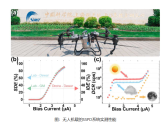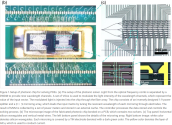The Institute of Microsystem and Information Technology of the Chinese Academy of Sciences successfully developed a superconducting single-photon detection system for unmanned aerial vehicles
The team of You Lixing, Li Hao, and Zhang Xiaofu from the Shanghai Institute of Microsystem and Information Technology's Superconducting Electronics Laboratory has successfully realized a high-efficiency superconducting single-photon detection system based on a commercial drone platform through the optimization of ultra-thin superconducting film materials and the development of an independent micro-low-temperature dewar. The research results were published on February 13 in the academic journal Advanced Photonics Nexus under the title "Drone-based superconducting nanowire single-photon detection system with a detection efficiency of more than 90%". The paper link address is .
Superconducting single-photon detectors (SSPDs) have become an enabling technology in the field of quantum information due to their high efficiency, low dark count rate, and excellent time resolution. With the support of the Strategic Priority Research Program of the Chinese Academy of Sciences and the Key R&D Program of the Ministry of Science and Technology, the SSPD devices and systems developed by the Shanghai Institute of Microsystem and Information Technology have reached the international advanced level and have been industrialized. Domestic SSPD systems have been widely used in quantum communications and optical quantum computing in my country, effectively avoiding the bottleneck problem of core detectors in this field. Since SSPDs are usually developed using low-temperature superconducting materials such as Nb(Ti)N, their performance gradually improves as the operating temperature decreases. Therefore, the mainstream SSPD system uses a small mechanical refrigerator with a typical operating temperature of around 2K. This type of SSPD system has large size, power consumption, and volume, and is mainly suitable for ground applications such as the Jiuzhang optical quantum computing prototype and optical fiber quantum communication. However, the application requirements of airborne quantum information require not only high detection performance indicators, but also small enough volume, power consumption, and size of the system, and the ability to be deployed quickly, but do not need to work continuously for a long time. The traditional SSPD system based on the GM refrigerator can no longer meet the needs of airborne applications. If the operating temperature of the SSPD can be raised to 4.2K and combined with a liquid helium dewar, the volume, size and power consumption of the SSPD system can be greatly reduced, and it is expected to be applied on airborne systems.
Zhang Xiaofu, Ma Ruoyan and others from the Shanghai Institute of Microsystem and Information Technology optimized the composition of NbTiN thin film materials, improved the uniformity of the film and the critical temperature, and achieved a near-saturated intrinsic detection efficiency of SSPD at 4.2K. Combined with the mature SSPD preparation process technology developed by the Shanghai Institute of Microsystem and Information Technology, the detection efficiency reached 90%. In cooperation with Futong Quantum, they independently developed a small liquid helium dewar and peripheral circuits, and realized the world's first airborne SSPD system. The actual detection efficiency of the drone flight experiment reached 90%. The success of this experiment has laid a solid foundation for the future development of airborne quantum information (quantum communication, lidar, etc.).



